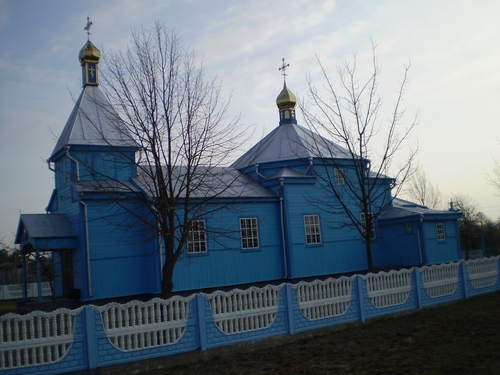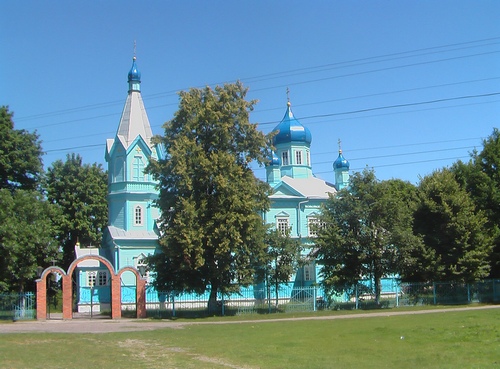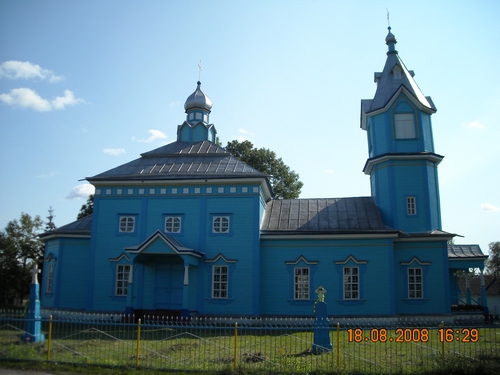1. Introduction: The Broader Impact of Urban Colors and Treats on Community Well-Being
Building on the foundation established in How Colors and Treats Shape Our Cities, it becomes evident that urban aesthetics are far more than mere visual appeal. They serve as vital elements that influence the psychological health, social cohesion, and overall vitality of communities. Visual and sensory components such as vibrant color schemes, inviting treats, and multisensory experiences play pivotal roles in shaping the urban environment, fostering a sense of identity and belonging. Transitioning from this aesthetic perspective, we now explore how these elements directly impact community well-being, mental health, and social interaction, revealing their importance in creating resilient, thriving cities.
Contents
- The Psychological Effects of Urban Colors on Residents
- Sensory Treats as Catalysts for Social Interaction and Mental Health
- Urban Design Strategies to Promote Well-Being Through Colors and Treats
- The Role of Community Engagement in Shaping Color and Treats Initiatives
- Measuring the Impact of Colors and Treats on Community Well-Being
- Connecting Back to the Parent Theme: From Aesthetics to Holistic Community Health
2. The Psychological Effects of Urban Colors on Residents
a. How Color Palettes in Public Spaces Influence Mood, Stress Levels, and Overall Mental Health
Research demonstrates that color schemes in urban environments can significantly affect psychological states. For example, calming blues and greens in parks and public seating areas have been shown to reduce stress and promote relaxation, as supported by studies from environmental psychology. Conversely, vibrant reds and oranges, often used in commercial zones, can energize but also overstimulate, potentially increasing anxiety if overused. The strategic application of these palettes—such as using soft pastels in community centers—can create spaces that foster mental tranquility, contributing to overall community health.
b. Case Studies of Color Interventions and Their Outcomes on Community Well-Being
A notable example is the ‘Color Our City’ project in Melbourne, where repainting underpass walls with soothing hues led to a measurable decline in graffiti vandalism and an increase in positive mood reports among residents. Similarly, the city of Bilbao introduced a ‘Yellow Zone’ initiative—painting benches, railings, and signage in warm yellows—to encourage outdoor activity among seniors, resulting in heightened social engagement and improved mental health indicators.
c. The Role of Cultural Perceptions of Color in Urban Settings
Color perception varies across cultures, affecting urban design choices. In East Asia, red symbolizes luck and prosperity, leading to its frequent use in public festivals and city branding. In Western contexts, blue often signifies calm and trust, influencing its deployment in health clinics and civic spaces. Understanding these cultural nuances ensures that color interventions resonate positively with local populations, enhancing their psychological benefits.
3. Sensory Treats as Catalysts for Social Interaction and Mental Health
a. The Significance of Urban Treats (e.g., Food Markets, Street Art, Scent-Based Experiences) in Fostering Community Bonds
Urban treats create multisensory environments that promote social bonding. Food markets like Barcelona’s Mercat de Sant Josep or Seoul’s Gwangjang Market serve as communal hubs, encouraging interaction through shared tastes and cultural exchange. Street art, such as in Melbourne’s Hosier Lane, not only beautifies neighborhoods but also invites communal participation and dialogue. Scent-based experiences, like aromatic walking trails in Portland, stimulate olfactory senses, evoke memories, and foster a collective sense of place.
b. How Multisensory Experiences Enhance Feelings of Belonging and Reduce Social Isolation
Multisensory urban environments activate multiple neural pathways, strengthening emotional connections. For example, sensory gardens incorporating tactile, visual, and olfactory elements have been shown to reduce feelings of loneliness among elderly residents. Events like city-wide food festivals integrate taste, sight, and sound, creating inclusive atmospheres that foster community engagement and mental resilience.
c. The Impact of Accessible Treats on Mental Recovery and Resilience
Accessible treats—such as local markets or free street performances—serve as mental health buffers, especially in underserved areas. They provide opportunities for joyful engagement, distraction from daily stressors, and social support networks. A study in Chicago found that neighborhoods with active street markets saw decreased rates of depression and anxiety among residents, illustrating how sensory richness and community access promote mental resilience.
4. Urban Design Strategies to Promote Well-Being Through Colors and Treats
a. Designing Public Spaces that Incorporate Calming or Invigorating Color Schemes Based on Community Needs
Urban planners can employ evidence-based color psychology to tailor public spaces. For instance, integrating cool tones in healthcare zones to promote calmness and warm tones in recreational areas to energize visitors. Examples include the use of pastel shades in playgrounds to soothe children and vibrant murals in downtown districts to stimulate economic activity and social interaction.
b. Integrating Sensory Treats into Urban Planning to Encourage Social Activities and Mental Health
Urban planning can include sensory elements such as community gardens, scent installations, or interactive art. Incorporating food stalls and markets into pedestrian pathways encourages spontaneous socialization. Designing parks with tactile pathways and aromatic plantings enhances multisensory engagement, supporting both mental health and community cohesion.
c. Examples of Successful Projects that Prioritize Community Well-Being Through Thoughtful Use of Colors and Treats
| Project | Description | Outcome |
|---|---|---|
| The Colorful Crosswalks | Implementation of vibrant crosswalks in urban centers to improve visibility and boost pedestrian safety | Increased pedestrian activity and enhanced city vibrancy |
| Scent Garden in Downtown | A public garden featuring aromatic plants designed to promote relaxation and mental clarity | Higher usage rates and reported reductions in stress among visitors |
| Street Art Festivals | Community-led murals and art installations that foster inclusion and cultural expression | Strengthened community identity and increased social interactions |
5. The Role of Community Engagement in Shaping Color and Treats Initiatives
a. Involving Residents in Selecting Colors and Urban Treats to Reflect Local Identity and Preferences
Participatory design processes, such as community workshops and surveys, help ensure that aesthetic choices resonate with residents’ cultural backgrounds and preferences. For example, in Medellín, Colombia, local murals reflect neighborhood histories, fostering pride and ownership. Engaging residents in these decisions encourages a sense of belonging and ensures that interventions support mental well-being.
b. How Participatory Approaches Strengthen Community Ownership and Mental Health Benefits
When communities actively participate in aesthetic development, they experience increased social cohesion and empowerment. This sense of ownership can buffer against urban stressors, reduce feelings of alienation, and promote collaborative problem-solving. Participatory urban art projects in Berlin, for example, have demonstrated improvements in neighborhood mental health indicators.
c. Overcoming Challenges in Implementing Inclusive and Health-Promoting Urban Aesthetics
Challenges such as resource limitations, cultural misunderstandings, and governance hurdles can be addressed through transparent communication, flexible planning, and inclusive outreach. Building partnerships with local organizations and residents ensures that initiatives are sustainable and truly beneficial.
6. Measuring the Impact of Colors and Treats on Community Well-Being
a. Tools and Metrics for Assessing Psychological and Social Outcomes
Quantitative tools such as the WHO-5 Well-Being Index and the Social Cohesion Index can evaluate mental health and community bonds. Qualitative methods include interviews and participatory observation. Spatial analytics, like tracking foot traffic and social media engagement, also provide insights into behavioral changes following aesthetic interventions.
b. Long-Term Benefits of Integrating Well-Being-Focused Color and Treat Strategies
Studies indicate that sustained integration of positive visual and sensory elements correlates with decreased crime rates, improved mental health, and higher community satisfaction. Longitudinal research in Barcelona’s urban renewal projects revealed that residents reported feeling safer and more connected over five years.
c. Feedback Loops for Continuous Improvement in Urban Design
Establishing ongoing feedback channels—such as community forums, digital surveys, and social media—enables urban planners to adapt strategies based on resident input. This iterative process ensures that aesthetic and sensory initiatives remain relevant, effective, and supportive of community health.
7. Connecting Back to the Parent Theme: From Aesthetics to Holistic Community Health
a. How the Insights on Well-Being Deepen Understanding of the Initial Concepts
By examining the psychological and social impacts of urban colors and treats, we recognize that aesthetic choices serve as catalysts for health and resilience, not merely decorative elements. This deeper understanding transforms urban design from superficial beautification into a powerful tool for community empowerment.
b. The Importance of Considering Community Psychological Health in Urban Aesthetic Decisions
Incorporating mental health considerations into aesthetic planning ensures that urban environments are inclusive and supportive. Thoughtful use of calming colors, accessible sensory treats, and participatory processes can mitigate urban stressors, fostering resilient communities.
c. Final Reflection on How Aesthetic Choices Can Foster Thriving, Resilient Cities
Ultimately, the strategic application of colors and treats in urban spaces plays a vital role in nurturing mental health, encouraging social bonds, and cultivating a sense of place. These elements, when thoughtfully integrated, contribute to cities that are not only visually appealing but also psychologically nourishing and socially resilient.















